We have already talked about bizarre mythological monsters and impressive dragons you may have missed out on from popular media like television shows and movies. Well, this time around, we have decided to up the ante with a myriad of ‘hybrid’ mythical creatures that you may not have known about.
So, without further ado, let us check out the brief history and mythology of fifteen such elusive yet outlandish mythical creatures (ranging from ancient to medieval times) that emerge as unearthly crosses between familiar animals and humans. The myriad creatures, presented in alphabetical order, have their origins in myths and legends from different parts of the world.
Contents
- Ammit (from Egyptian Mythology)
- Buraq (from Islamic Mythology)
- Gajasimha (from Indian Mythology)
- Hatuibwari (from Melanesian Mythology)
- Hippalectryon (from Greek Mythology)
- Khepri (from Egyptian Mythology)
- Matsya (from Indian Mythology)
- Monocerus (from Medieval Legends)
- Mušḫuššu (from Mesopotamian Mythology)
- Nawarupa (from Burmese Mythology)
- Onocentaur (from Greek Mythology)
- Pazuzu (from Babylonian Mythology)
- Qilin (from Chinese Mythology)
- Tarasque (from French Folklore)
- Wolpertinger (from German Folklore)
Ammit (from Egyptian Mythology)
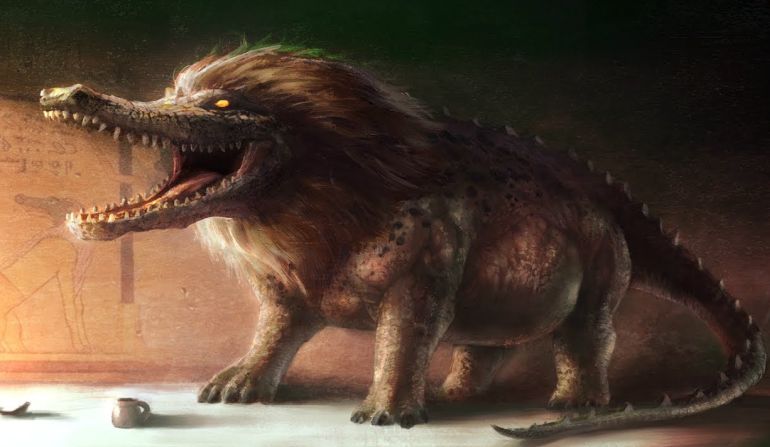
Ammit (also known as Ammut) was an underworld-dwelling ancient Egyptian goddess/demon who personified divine retribution. The hideous monster had the multifaceted anatomy of a lion, hippopotamus, and crocodile.
According to the ancient myths, she waited for the opportunity to devour the hearts of people who were deemed unworthy (their worthiness being measured by the scales of Ma’at) – thus cursing their ’empty’ souls to roam aimlessly for eternity, instead of otherworldly bliss. So, in essence, Ammit was not worshiped like other gods. Rather, as one of the ominous mythical beasts, she epitomized the collective fear of Egyptians that pertained to ‘second death’.
Buraq (from Islamic Mythology)
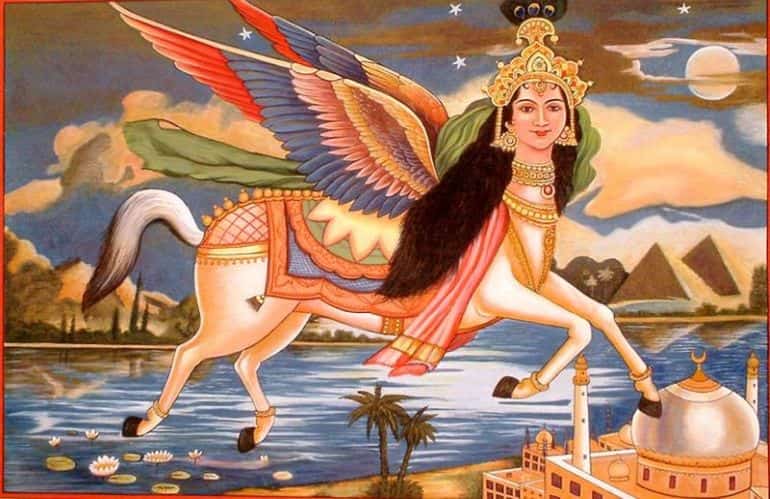
The Dome of Rock site (as part of the bigger and older Temple Mount) is venerated by Muslims because of its significance as the sacred spot from where Prophet Mohammed rose to heaven in his Night Journey.
And, he was supposedly carried to heaven on a fantastical white-hued, horse-like creature named Buraq – that was half-mule (or smaller than a mule), half-donkey (or bigger than a donkey), and had wings. Oddly enough, eastern sources like Persian and Indian art depict the Buraq to have a humanoid visage and peacock tail, but early-Islamic traditions mention no such specific features.
Gajasimha (from Indian Mythology)
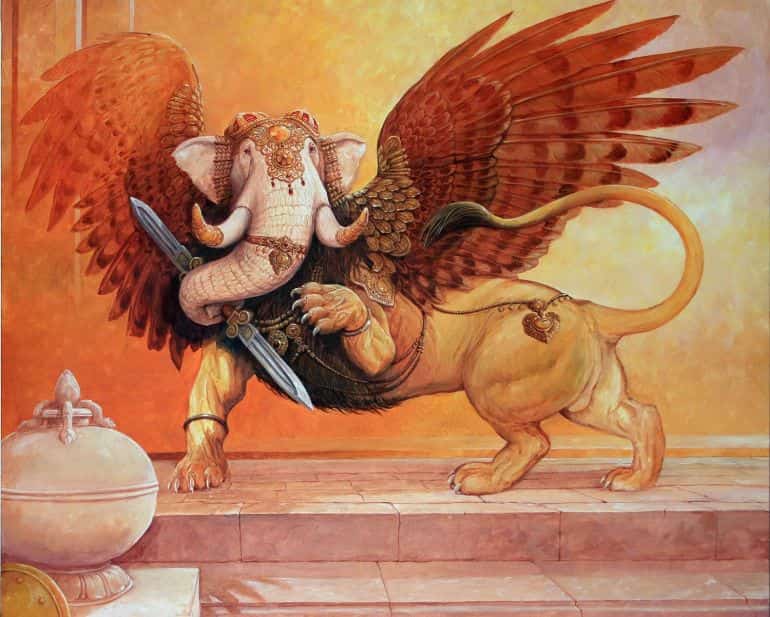
According to Hindu mythology, the Narasimha (or Narasingha) was one among the ten Vishnu avatars with the head of a lion and the body of a man. The Gajasimha is most probably a twist on this mythical being (or a variant of the Hindu elephant god Ganesha), with its conspicuous elephant head and the body of a lion.
Unfortunately, there is not much information regarding the hybrid creature, except for numerous sculptural and painted depictions, mostly found in the temples of South East Asia and South India.
Hatuibwari (from Melanesian Mythology)
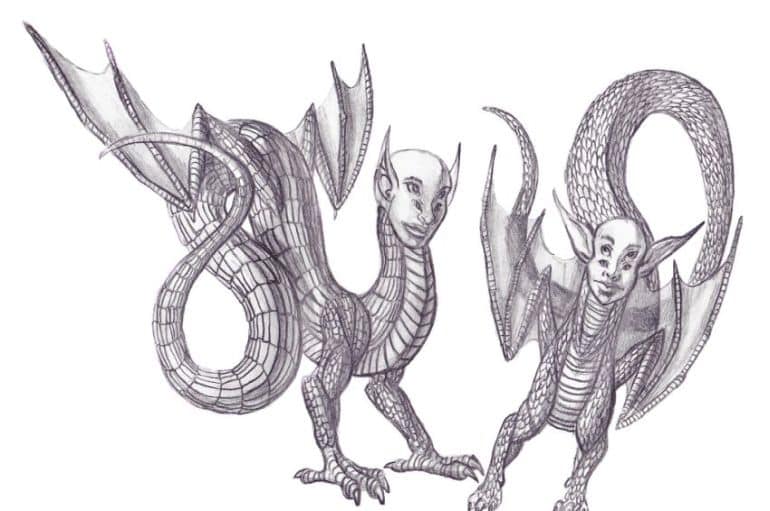
Hatuibwari has been described to have the head of a human with four eyes, the torso of a huge serpent with imposingly grandiose wings, and sometimes also four pendulous breasts that signify its status as the primordial ancestor of human beings.
Mentioned in various traditions and folklore of Melanesia (a Pacific group of islands northeast of Australia), the Hatuibwari was most probably worshiped as a cosmic creature that created as well as nourished early humans. Few sources have even put ‘him’ across as a masculine version of Mother Earth – thus serving as an antithesis to the commonly portrayed femininity of our planet.
Hippalectryon (from Greek Mythology)
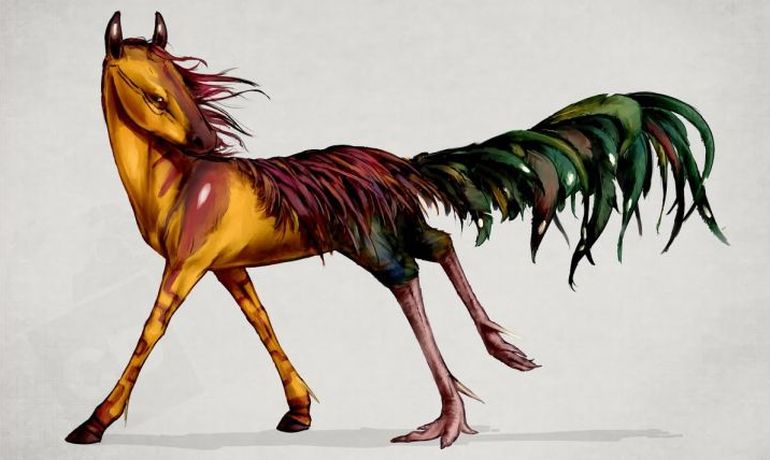
A fantastical creature with depictions as old as 3,000 years, the Hippalectryon is derived from Cretan (or possibly Mycenaean) folklore as a beast with half-horse and half-rooster features. The Athenian comic playwright Aristophanes had described the Hippalectryon as an odd-looking creature with yellowish feathers. The very same author had also made a hypothesis that the origin of the hybrid beast had been influenced by Middle Eastern folkloric traditions.
Other sources hint at how the creature may have been an alternative representation of the renowned winged horse Pegasus. But the most interesting account arguably comes from Aristophanes’s own play ‘The Frogs‘, where he mentions how the Hippalectryon was so comically ugly (among the mythical beasts) that it invited laughter from people around, thus driving evil away for good.
Khepri (from Egyptian Mythology)
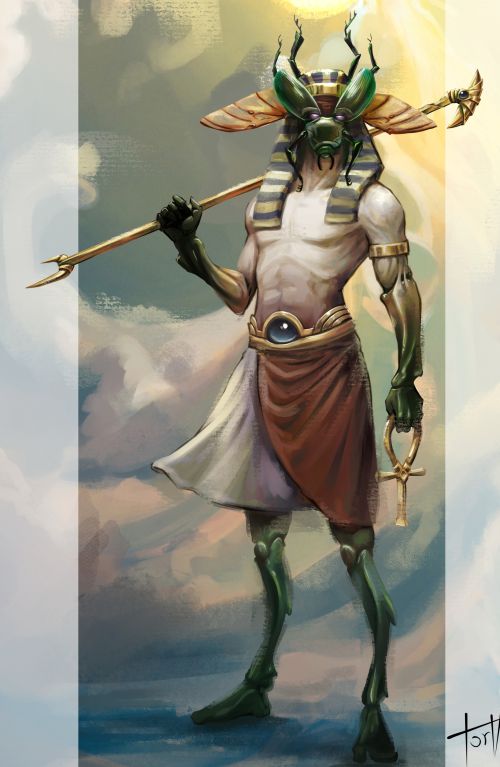
Intrinsically connected to the scarab beetle, Khepri was usually depicted as a man with a beetle head in Ancient Egyptian funerary papyri. There was a symbolic side to the whole affair of Khepri worship – with the god epitomizing the forces that moved the sun across the vast expanse of the sky.
This connection was derived from the action of scarab beetles when they rolled balls of dung across the rigorous desert surface – while the young beetles emerged from inside the dung, from the eggs laid by the parent. This is in fact related to the Egyptian word ‘kheper‘, which roughly translates as – ‘to change’ or ‘to create’. In any case, Khepri was also considered as being subordinate to the more exalted sun god Ra.
Matsya (from Indian Mythology)
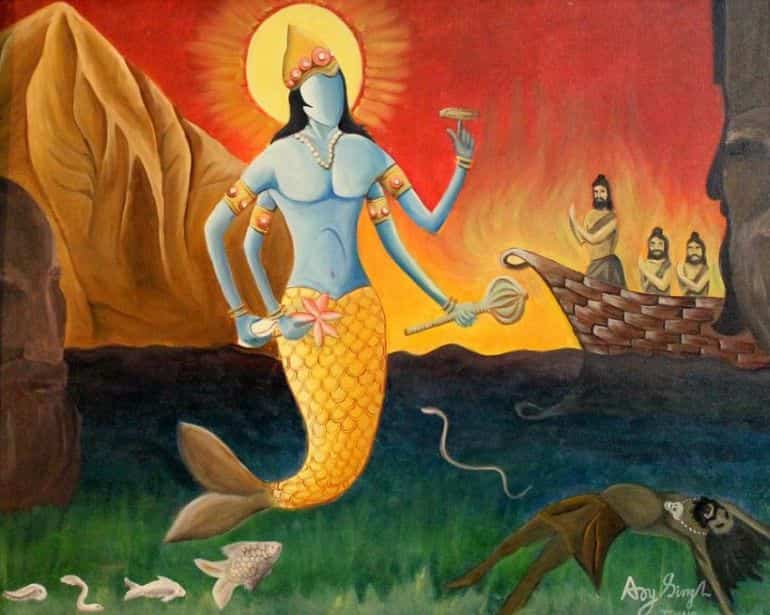
Having the head of a human and the underpart of a fish, the Matsya might appear to be a variant of the European-origin merman. However, the tradition of the Matsya is far older with the powerful entity being described in Vedic texts as one of the ten primary avatars of Vishnu (like our earlier mentioned Narasimha).
And quite interestingly, in a strikingly similar vein to the Biblical account of Noah’s Ark, the Indian Manu also survived a catastrophic flood brought on by the gods, by building a great ark. This ark/boat was guided and pulled by the magnificent Matsya – a heroic feat that ultimately allowed Manu (and his family, animal pets, and even collected plant seeds) to be safe to repopulate the earth.
Monocerus (from Medieval Legends)
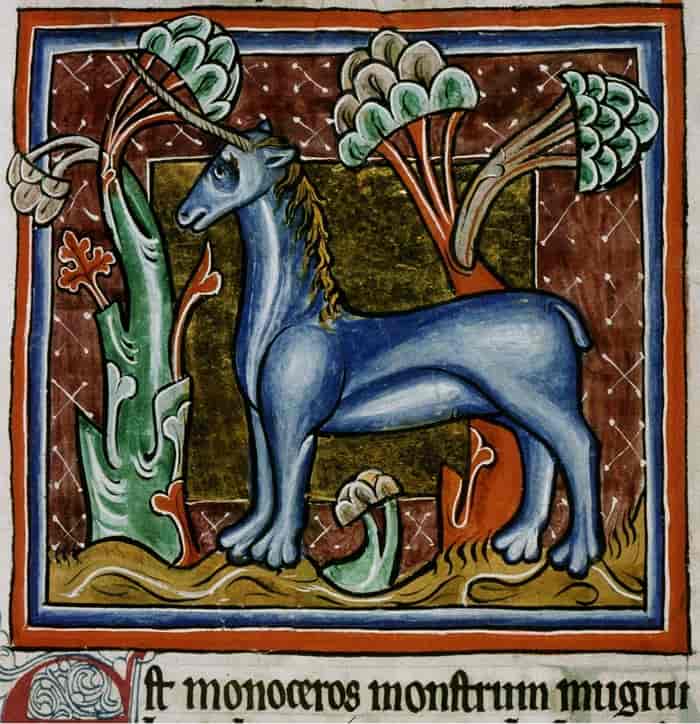
Derived from the Greek term Μονόκερος, the Monocerus simply pertains to an animal with a single horn, like the unicorn. However, Medieval bestiaries have given a fantastical twist to the hybrid creature by describing it as having the head of a stag, the body of a horse, the legs of an elephant, and a tail of a boar. To top that off, the beast had only one horn, and it was supposedly used to aim at the belly region of its opponents, namely the elephant!
Mušḫuššu (from Mesopotamian Mythology)
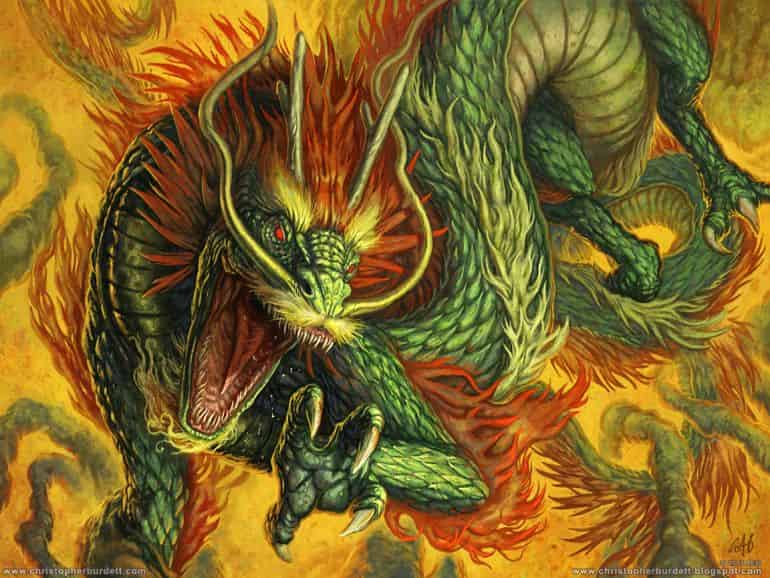
An image that might be familiar to history enthusiasts from the reconstruction of the Ishtar Gate (of Babylon) in the Pergamon Museum, the Mušḫuššu, pronounced – ‘Mush·khush·shu‘ (also known as sirrušu) is rather a cryptic mythical creature which may have even influenced the Lernaean Hydra.
In some narratives, the hybrid creature is the favored (or sacred) animal of none other than Marduk – the patron god of ancient Babylon. The name itself possibly refers to a ‘fierce snake’ or ‘splendid serpent’. To that end, the creature has been described as having a dragon-like appearance, with a long neck, a horned head with a crest, and a serpentine tongue – complemented by the lion’s (or feline’s) forelegs and hind legs of an eagle.
Nawarupa (from Burmese Mythology)
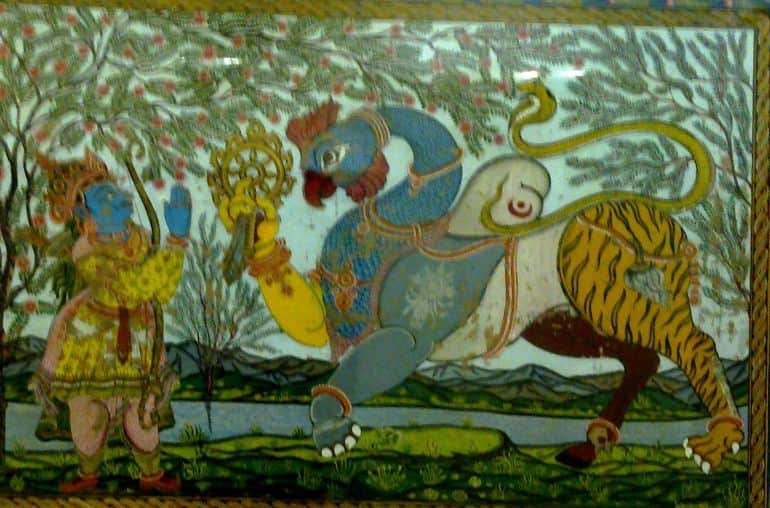
Literally meaning having ‘nine forms’, Nawarupa, also known as byala (especially in Arakenese myths), is a hybrid mythical creature that is said to have an assorted composition from nine different animals. Often used in motifs that bedecked the royal barges, the creature is described as having the conspicuous trunk of an elephant, the horns of a rhino, and the eyes of a deer,
Additionally, the mystical creature had the ears of a horse, the wings (or possibly tongue) of a parrot, the body of a lion, the tail of a peacock (or yak), and feet of Chinthe (the griffin-like creatures often depicted in Buddhist pagoda complexes). A similar mythical critter known as the Pyinsarupa (‘five forms’) is used as a heraldic device of Myanmar’s current flagship air carrier.
Onocentaur (from Greek Mythology)
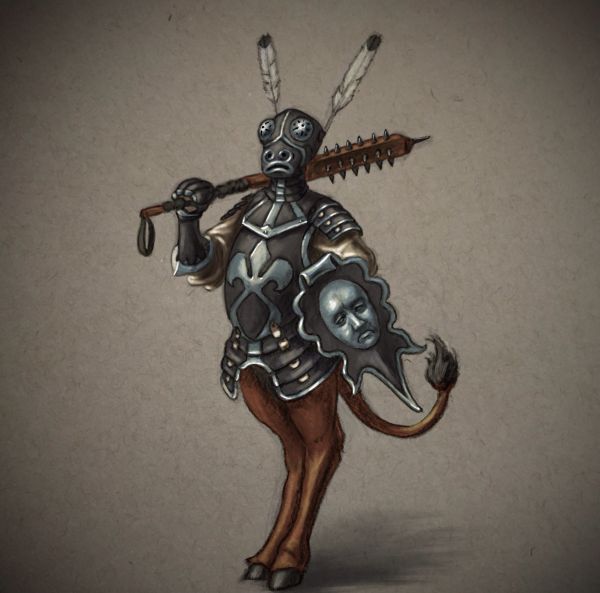
Some of us must know about the renowned centaur, the mythical Greek beast with the head and torso of a human and the legs of a horse. Well, as it turns out, there is a less-impressive variant of the centaur, called the Onocentaur. Those who know their etymology must have already recognized its donkey credentials.
And beyond Onocentaur’s ‘half-assed’ anatomy, the liminal being was supposedly mentioned for the first time by Pythagoras, while its female form was known as the onokentaura in Latin – as described by Roman author Claudius Aelianus. Furthermore, Greek poetic mythology makes mention of another exotic centaur hybrid known as Ichthyocentaur – with the upper torso of a man, the lower front of a horse, and the tail of a fish!
Pazuzu (from Babylonian Mythology)
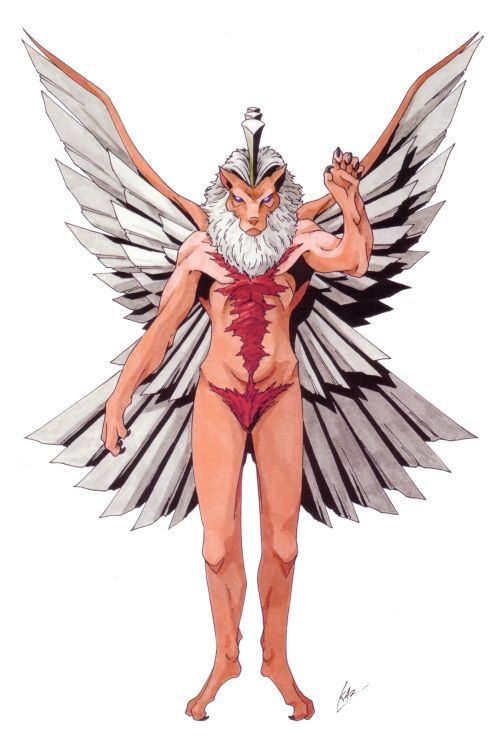
Those who ‘observe’ their movies might identify the Pazuzu from the famous horror-thriller ‘The Exorcist’. In mythological terms, the winged Pazuzu also had some ominous and unsightly aspects with its dog head, eagle-like feet, a scorpion’s tail, and a serpentine private part!
As can be gathered from such frightful features, the monster was depicted as the demon of winds who could bring about catastrophic famines during the rainy seasons. However, the Pazuzu was also invoked to lead the fight against other evil spirits, namely the Lamashtu, a malevolent Akkadian goddess who kidnapped infants by snatching them away from their mother’s breasts.
Qilin (from Chinese Mythology)
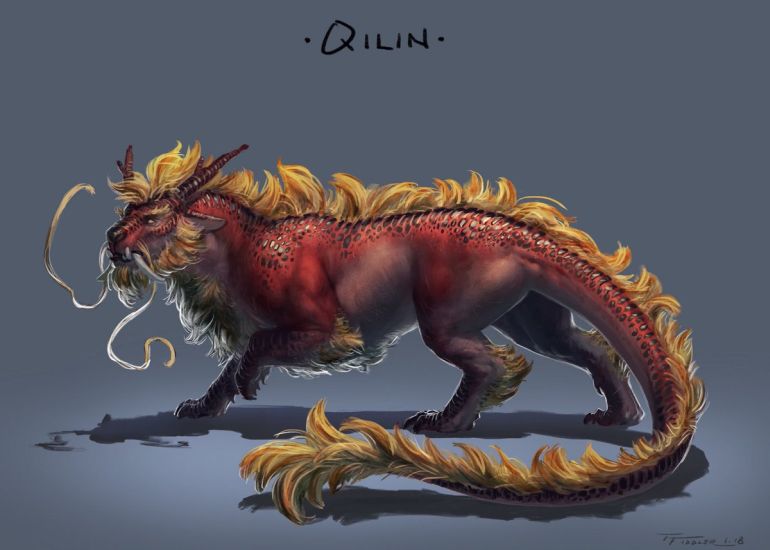
In Chinese legends, the Qilin goes hand in hand with whimsicality and mysticism. Also known as the Chinese Unicorn, the spotting of the venerable beast signifies the birth (or death) of a sage or eminent ruler. The innocuous features of the creature are depicted as – having a body of a deer with a single horn, a tail of an ox, and the hooves of a horse, while their backs projected a vivacious palette of various colors that was complemented by a yellowish belly.
Other descriptions of the Qilin entail dragon-like attributes with thick eyelashes and back scales. However, the most interesting episode of the Qilin would pertain to – when a real giraffe was (possibly) presented as the mythical creature to China’s Ming emperor Yongle.
Tarasque (from French Folklore)
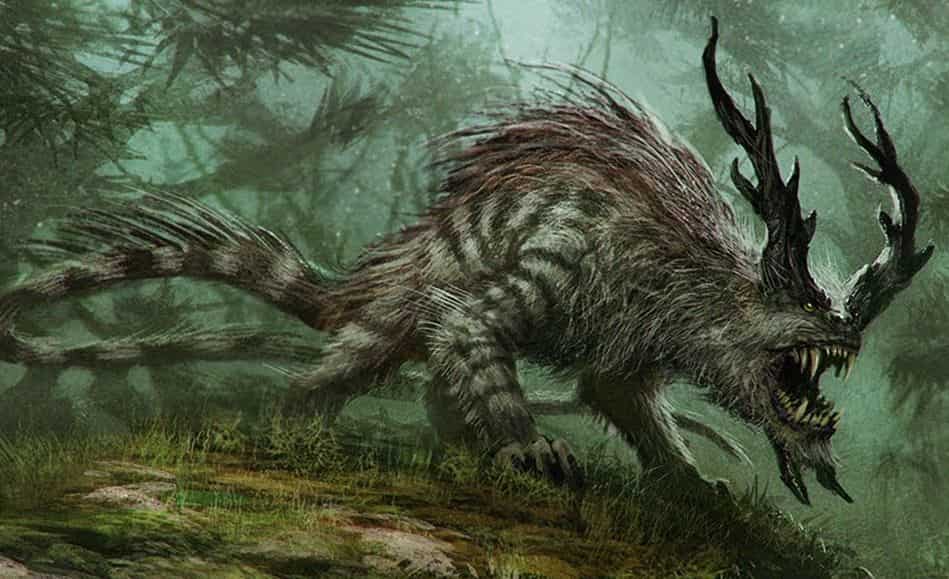
Tarasque is mentioned in various sources, but the most renowned account of the terrifying beast comes from the Medieval ‘bestseller’ Golden Legend (or Legenda sanctorum in Latin), compiled (possibly) circa 1260 AD. It has been described as a dragon or a dragon-like creature with a head of a lion, a body of an ox covered with a turtle shell, the legs (six of them) of a bear, and finally a scaled tail that ended up like that of a scorpion.
According to the Golden Legend, it dwelt in a marsh along river Rhone, and pounced upon unsuspecting travelers with its “sword-like teeth and sharp horns”. As for its origins, the mythical being was said to come from the region of Galatia (in present-day Turkey) – the homeland of its legendary bison-like parent, Onachus.
Wolpertinger (from German Folklore)
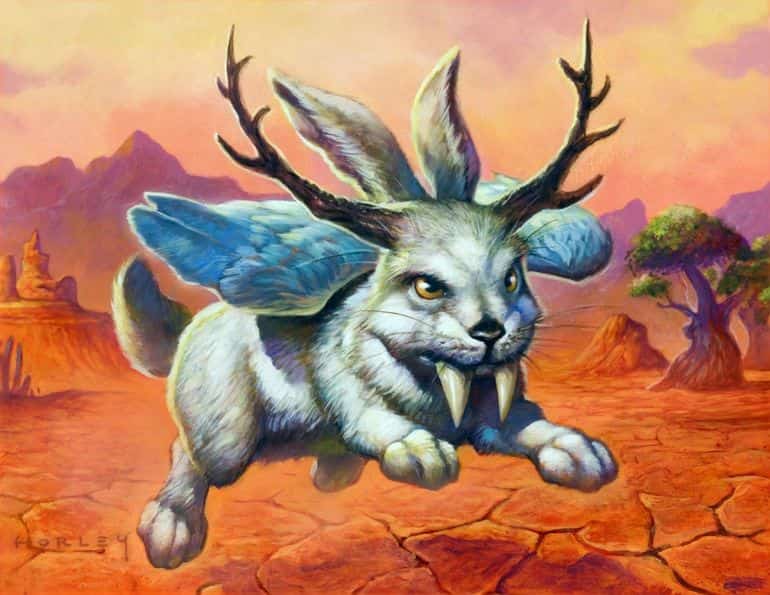
A creature that is said to inhabit the picturesque forests of Bavaria, the origins of Wolpertinger might come from popular culture inspired by earlier myths and folklore. Often perceived as a ‘mashup’ of various animals and their parts, the Wolpertinger does bear similarities to the mythical Rasselbock from Thuringia (southern Germany) and even the Jackalope of America.
To that end, the critter is described as having the head of a hare (or rabbit), the body of a squirrel (or hare), the antlers of a deer, and the wings (and sometimes webbed feet) of a pheasant or duck. Interestingly enough, the popular lore associated with the Wolpertinger pertains to how they are only enticed by beautiful human females.
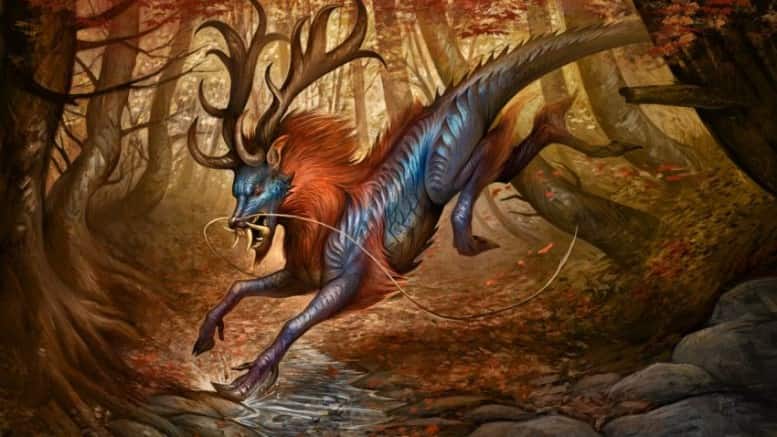

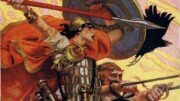
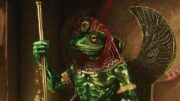
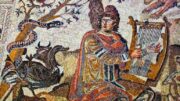
Be the first to comment on "15 Strangest ‘Hybrid’ Mythical Creatures From Around The World"